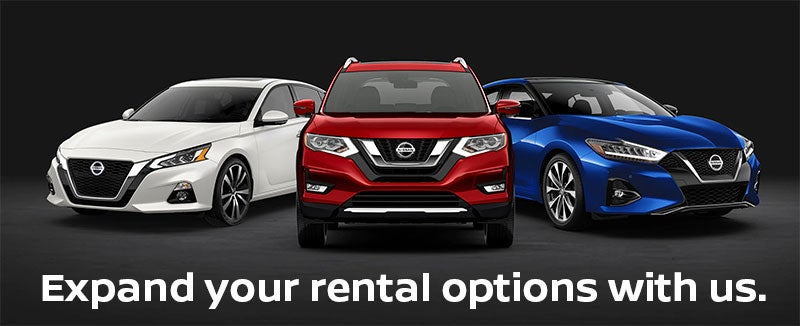New Reasons On Deciding On Car Rental Websites
New Reasons On Deciding On Car Rental Websites
Blog Article
How Do You Review The Insurance Coverage Provided By The Rental Company While Renting A Vehicle?
It is crucial to examine the coverage and insurance options offered by the car rental company in order to avoid any unnecessary costs and ensure that you are properly protected. You can review the insurance coverage you have for your rental car in a few ways Understanding the Basic Coverage. First, understand the terms of the rental agreement. The majority of rental firms provide basic liability insurance, which covers bodily injuries and damage to property caused by third parties in the event that you are at fault. The insurance is subject to limits and deductibles.
Consider Additional Coverage Options Apart from the standard insurance, rental firms offer various optional insurance packages to provide additional protection. Some of the most common kinds of additional coverage include Collision Damage Waiver and Loss Damage Waiver. These help to reduce or entirely eliminate your financial obligation in the event that you cause damage to the rental vehicle.
Review Coverage Limits and the Deductibles. Examine the coverage limits of each insurance policy and deductibles. Find out the maximum payout from insurance in case of damage. Also, identify the deductible you have to pay prior to when your insurance coverage starts to take effect.
Review your personal insurance policies. Check if your car insurance or credit card policy covers rental cars. If you are using your credit card to pay for a car rental, some cards also provide insurance coverage. The coverage provided by your personal auto insurance policy could extend to rental cars. However, the amount of the coverage may differ dependent on the policy you've got and your insurance company.
Assess Your Tolerance for Risk: If you're considering purchasing additional insurance, consider your financial and risk tolerance. You may want to purchase additional insurance coverage if your concern is the possibility of damage or theft. However, if you already have enough insurance coverage from other sources you can not take advantage of the insurance choices to save money.
Check out Exclusions. Ask the rental company if there are any exclusions from insurance coverage. Some examples include restrictions on off-roading or driving without authorization, drivers, or commercial usage. In order to avoid any unpleasant surprises, make sure that you're aware of the terms and conditions of the insurance.
Document existing damage. Before you accept the rental, thoroughly inspect the vehicle to determine if there is any wear and tear. Record any dents, scratches, or other damage in the rental agreement. You can also take photos or videos as evidence. You'll be protected from being held liable for any damage that was in place when you returned the car.
Examining the insurance and other options offered by the rental firm can aid you in making the best choices. So you'll be secure during your rental period without incurring any unnecessary costs. See the top Rent Cars Around the World for site advice including extoic car rental, renting a car under 25, drive rent a car, drive hire car, trip rental car, day car hire, car in rent near me, drive rent a car, exotix car rental, rental car search and more.
How Do You Inspect The Car For Any Damages Or Wear And Wear And
It is essential to examine the vehicle for any signs of wear and damage prior to accepting the vehicle. This will help you avoid being held liable for issues you have discovered at the time of return. Follow these steps to conduct thorough inspections: External Inspection:
Walk around the exterior of the car and carefully examine the body for scratches, dents damages, or dings.
Make sure you pay attention to any areas susceptible to being damaged such as bumpers and doors.
Check the windshield and windows for chips, cracks, or other damages.
Inspect the undercarriage and the vehicle for signs of leaks or damage.
Interior Inspection:
Examine the interior by opening the doors as well as the trunk.
Check the seats, upholstery and carpets for signs of stains, tears, or excessive wear.
Check all adjustments to the seat including the driver's chair to make sure they work correctly.
Examine the dashboard, steering column, and controls to see whether there are any damage or issues.
Check the condition and efficiency of the heating, cooling and ventilation system.
Test the audio system, the lights, turn signals, and other electronic features.
Functional Inspection
Start the vehicle and then check the dashboard for any errors or warning messages.
Check the accelerator, brakes and clutch (if necessary) to make sure they are operating efficiently.
Check that all lights are working by turning on your headlights, brakes and high beams.
Test your windshield wipers along with the washer fluid as well as the horn.
Do not fail to document any damage.
Document any damage or issue by using a rental contract provided by the company renting out your car or via an app for your smartphone.
Photograph and film your vehicle from various angles. Make sure you focus on areas that are damaged or show evidence of wear.
Note the exact location and the severity of all scratches, dents and other damage on the rental contract form.
If you find any damage or damage, contact the representative at the rental car agency prior to accepting the car.
Report Damage:
The representative of the rental company should be informed of any damages or issues that you've found during the inspection.
Inquire that they record the damage in their records and provide you with copies of the report of inspection.
In order to acknowledge the the damage, you must both sign the rental contract or the form for inspection.
Following these steps will help you avoid any legal concerns and ensure that your rental experience goes smoothly.
What Do You Need Understand Regarding A Company's Policies On Fuel?
Knowing the rental company's fuel policy can help you avoid any extra costs and assure the return process is simple. It is possible to clarify the policy on fuel by reading the rental agreement. In most cases, fuel policy is found in the document.
Read the Terms and Conditions: Check for specific information regarding the fuel policy, such as the requirement to return your vehicle with a full tank of gas or if you can pre-purchase a tank fuel at a set price, or pay for refueling service charges.
Ask Rental Company Reps: If the fuel policy isn't clear in the rental agreement or if you have any other questions, ask the representative of the rental company to clarify. For more details on the policy regarding fuel, you can contact their customer support department via email, phone or live chat.
Some rental companies ask that you return the vehicle that is fully fueled in order to avoid any additional costs. In this situation you'll need to refill the gas tank at a station close to your vehicle. As proof of refueling you should keep the receipt.
Pre-purchase Options A few car rental firms provide the option of purchasing an entire tank of gas at a fixed price when you pick up your car. If you choose this option, you can return the vehicle at any fuel level without having to pay for refills. However, you won't receive a refund for empty fuel.
Refueling service fees If you don't have purchased fuel in advance and return the vehicle without a full tank of fuel, you could be billed by the rental firm to refill. The charge usually includes the cost of the fuel, plus an additional fee for service, which can be significantly higher than local gas rates.
Understand Penalties. Know about any fines or administrative fees associated with the policy on fuel, including the failure to refuel in a timely manner. Knowing the penalties ahead of time will allow you to avoid surprise costs when you return the vehicle.
Make a plan: based upon your travel schedule and the fuel policy of the rental company Plan your strategy for refueling. It is recommended to allow enough time to find the nearest petrol station in order to avoid charges for refueling.
You can avoid additional charges by understanding and adhering the company's policy on fuel.